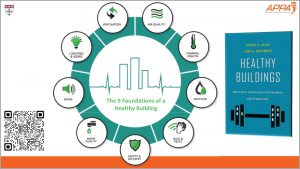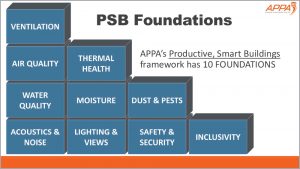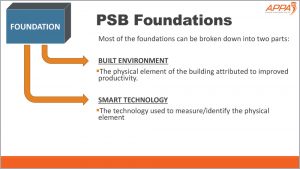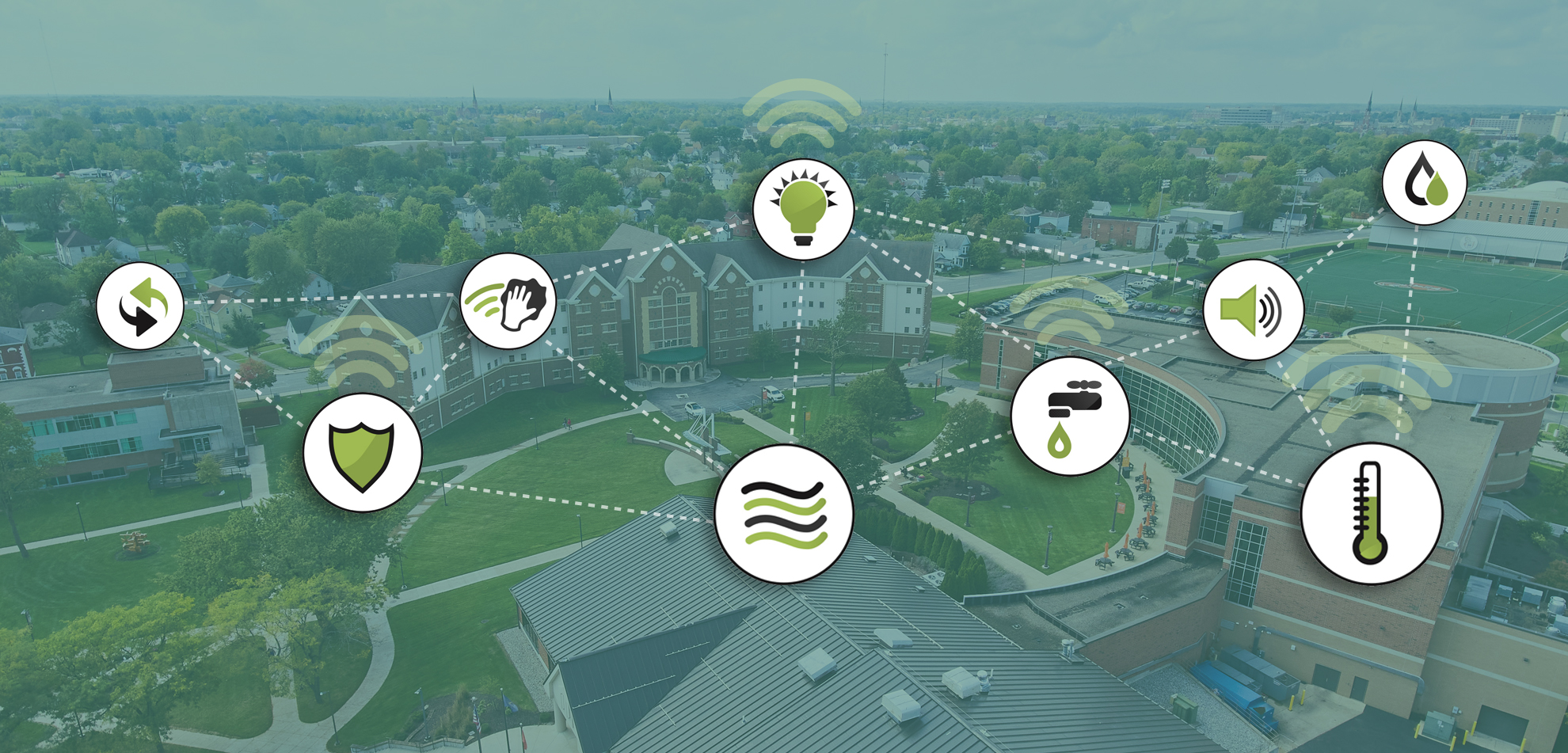Did you know that Americans spend more time inside buildings than some whale species spend underwater? In fact, humans spend 90% of their time inside buildings. Taking this into consideration, who is more important to the well-being of our employees, students, visitors, and faculty—their primary physician or their facilities manager?
As we adapt to the evolving paradigm of the postpandemic world, the role of the facilities manager, whether it is in K–12, higher education, corporate, or other campus settings, has elevated into the C-suite. While physical space has always been an essential asset to the organization, it is now one of a handful of strategic cards (such as tuition, compensation, culture, and athletic sports) that the human resources or recruitment team can use to attract and retain learners or talent. Simply put, the facility teams are the unsung heroes inside the postpandemic organization because of their unique ability to impact both the occupant’s well-being and productivity.

Source: Healthy Buildings, Allen & Macomber, 2020
Buildings or physical spaces were first constructed because we, as humans, needed shelter to provide safety. With the evolution of societies over the centuries and especially in the last few decades, organizations have come to rely on the built environment, and the experiences it hosts, to increase the productivity of the occupant whether in school, work, or recreation. These physical spaces, usually digitally augmented in some way, continue to evolve, and provide a place for collaboration, learning, and socialization, contributing to human evolution through innovation and intellectual growth.

With the rising cost of energy and the push to decarbonize, a facilities manager is faced with a complex trilemma: to reduce operational costs, improve operational effectiveness, and maximize the occupant experience all at the same time! In many situations, financial pressures prioritize the reduction in both capital and operational costs and therefore take precedence over the focus on the productivity of human capital for both the facilities manager and the occupant. The considerable degradation of human productivity that has resulted from of a lack of tangible measures is mostly invisible, though it depends on the type of human activity being measured and the nature of the cost-saving measures being implemented. A creditable and straightforward decision-making framework that balances the tangible and intangible benefits should help solve this imbalance.

The smart building framework, properly applied through innovations in both technology and not-for-profit business models, can achieve cost savings and should not result in a loss of human productivity. Specifically, smart building technologies allow us to achieve three seemingly mutually exclusive goals:
- optimize building conditions for increasing productivity during occupancy;
- maximize efficiency and occupant experience cost-effectively; and
- provide continuous monitoring and control of environmental conditions inside buildings for better human interactions.
To address this challenging trilemma, APPA’s Productive, Smart Buildings (PSB) initiative quantifies how productive our built environment is and how facility managers are leveraging smart technologies to continuously monitor, measure, and enable that productivity. PSB is a free self-assessment decision-making framework to optimize human productivity by investing in the built environment and smart technologies.
The PSB initiative is based on the “9 Foundations of a Healthy Building” identified in the book Healthy Buildings: How Indoor Spaces Drive Performance and Productivity (Allen & Macomber, 2020) and a 10th foundation, Inclusivity. In alignment with the intentional national focus on diversity, equity, and inclusion (DEI), this 10th foundation ensures that facilities management teams, as C-suite influencers, are at the forefront of the DEI conversation.
Productive, Smart Buildings Foundations:
- Ventilation
- Air Quality
- Thermal Health
- Water Quality
- Moisture
- Dust and Pests
- Acoustics and Noise
- Lighting and Views
- Safety and Security
- Inclusivity
Each of these foundations includes elements that will measure and corroborate the impact of both the built environment element and, in most cases, a smart building technology element.
For example:
- The built environment element of the Thermal Health foundation includes an assessment of a building’s ability to maintain the temperature in occupied spaces at the optimal level for everyone’s productivity. “Thermal health” references the way the temperature of the interior space drives or detracts from productivity. If you have ever tried to work in an office that’s too cold or too hot, it’s all you can concentrate on.
- The smart technology element quantifies if there are sensors and controls in those occupied spaces to continuously monitor and manage deviations. In addition, using occupancy sensing smart technologies can help reduce cost and energy consumption by automatically reducing ventilation and/or increasing temperature tolerance.
While the industry has marketed ways to identify a building’s energy efficiency and sustainability and allows facilities managers to obtain “certifications,” these come at a high cost to organizations whose budgets are already tight. APPA’s PSB is a first-of-its-kind self-assessment framework that allows senior facilities officers to quickly prioritize investments in the built environment by meaningfully engaging other departmental leadership from information technology, the financial office, and central administration to aid in decision making.

Source: JLL
Other industry instruments, metrics, and scorecards have led to limited success for the facilities manager when seeking additional funding to improve the built environment. This may be because those instruments focused on the metrics related to the built environment and the related stewardship. APPA believes that PSB will be different because this framework reverberates beyond the built environment. In fact, the PSB clearly shows how the built environment is impacting the most valuable aspect of our campuses—the people.
APPA engaged a pilot group of volunteers to complete the PSB framework for 3–10 buildings on their campuses in order to validate and improve it. Read the companion article, Productive, Smart Buildings: Pilot Program Results. The volunteers for the pilot group provided valuable feedback to the task force. The task force is currently incorporating that feedback to improve the framework before its general release to APPA members in summer 2022.
Learn more about APPA’s Productive, Smart Buildings initiative.
Lalit Agarwal is vice president, energy management & sustainability, at EnergyCAP LLC ([email protected]); Adam Gogolski is director of product management, planning portfolio, at Gordian ([email protected]); Rob Murchison is co-founder of Intelligent Buildings ([email protected]); and Jacob Olson is senior manager of informatics at the University of Nebraska Lincoln ([email protected]). This is their first article for Facilities Manager.







